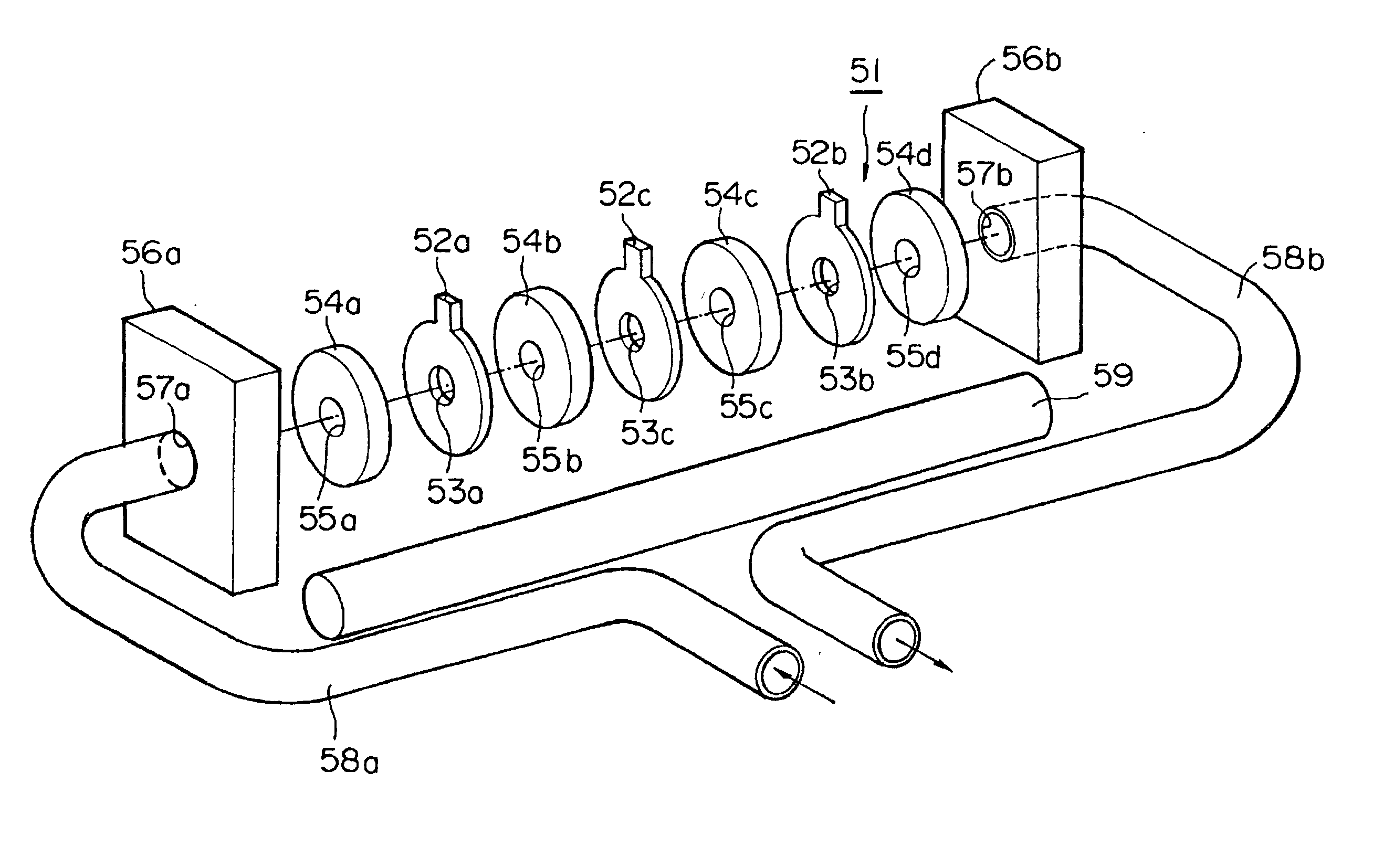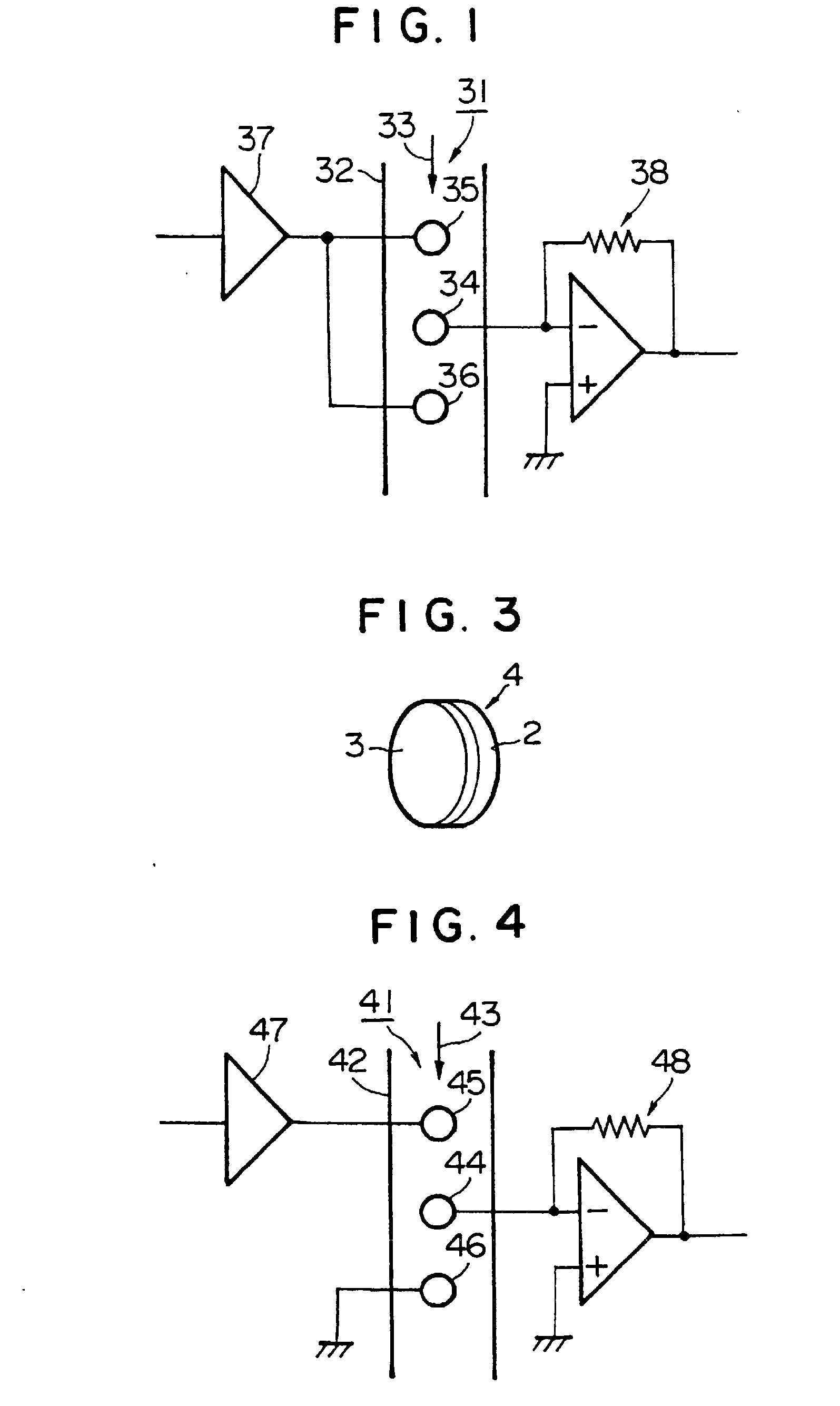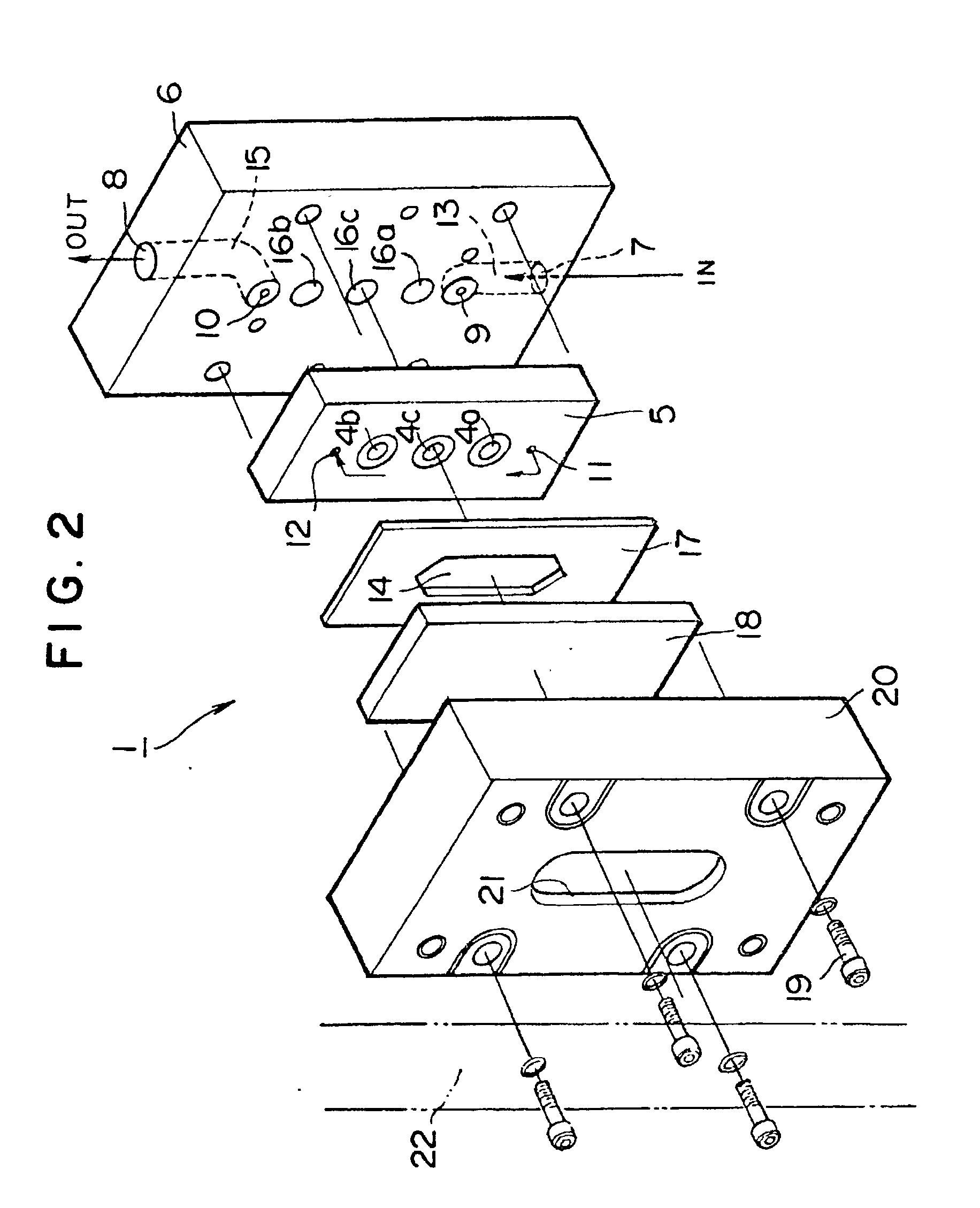Apparatus for measuring conductivity
a technology of conductivity and apparatus, which is applied in the direction of fluid resistance measurement, instruments, material impedance, etc., can solve the problems of not causing, reducing and scattering of measured data of electric data, so as to reduce the measurement accuracy of electric conductivity and reduce the effect of measurement accuracy
- Summary
- Abstract
- Description
- Claims
- Application Information
AI Technical Summary
Benefits of technology
Problems solved by technology
Method used
Image
Examples
first embodiment
[0032] FIG. 1 shows an apparatus for measuring electric conductivity according to the present invention. In this apparatus 31 for measuring electric conductivity, three electrodes 34, 35, 36 are brought into contact with a fluid 33 to be measured which is sent into an insulated measurement tube 32, or which is stored in the measurement tube 32. The three electrodes comprise a detection electrode 34 for detecting electric conductivity, and two AC current supply electrodes 35, 36 disposed on both sides of the electric conductivity detection electrode 34 at respective distances. An AC current of the same phase with a constant voltage of the same potential is applied to the two AC current supply electrodes 35, 36 through an amplifier 37. The electric conductivity detection electrode 34 is connected to an electric current amplifier 38, and an amplified electric current is output as a value corresponding to an electric conductivity of the fluid 33 to be measured through the electric curre...
second embodiment
[0042] FIG. 4 shows an apparatus for measuring electric conductivity according to the present invention. In this apparatus 41 for measuring electric conductivity, three electrodes 44, 45, 46 brought into contact with a fluid 43 to be measured are provided against the fluid 43 to be measured as a substance to be measured, that is sent into an insulated measurement tube 42, or that is stored in the measurement tube 42. The three electrodes comprise a detection electrode 44 for detecting electric conductivity, an AC current supply electrode 44 disposed on one side of the electric conductivity detection electrode 44 at a distance, and a grounded electrode 46 disposed on the other side of the electric conductivity detection electrode 44 at a distance. A predetermined AC current is supplied at a constant voltage to the AC current supply electrode 45 through an amplifier 47. The electric conductivity detection electrode 44 is connected to an electric current amplifier 48, and an amplified ...
example 1
[0048] An apparatus for measuring electric conductivity having three electrodes (all of three electrodes were not grounded) shown in FIG. 1 was constructed, a sodium chloride solution having a conductivity of 240 .mu.S was used as a solution to be measured, and the electric conductivity of the solution was measured. The temperature of the measuring cell was controlled at 45.degree. C. relative to the room temperature of 25.degree. C. at the time of measurement. The flow rate of the solution into the measuring cell was set at 1 ml / min. The result is shown in FIG. 6.
PUM
 Login to View More
Login to View More Abstract
Description
Claims
Application Information
 Login to View More
Login to View More - R&D
- Intellectual Property
- Life Sciences
- Materials
- Tech Scout
- Unparalleled Data Quality
- Higher Quality Content
- 60% Fewer Hallucinations
Browse by: Latest US Patents, China's latest patents, Technical Efficacy Thesaurus, Application Domain, Technology Topic, Popular Technical Reports.
© 2025 PatSnap. All rights reserved.Legal|Privacy policy|Modern Slavery Act Transparency Statement|Sitemap|About US| Contact US: help@patsnap.com



